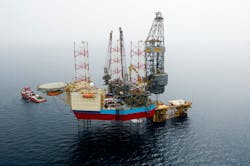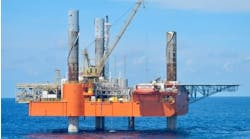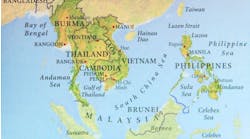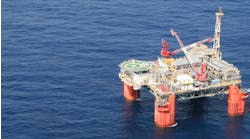Drilling rig contractors see signs of market improvement
Offshore drilling rig contractors are reporting that they are seeing signs of market improvement, particularly in day rates and demand for harsh-environment rigs. But the reports are not without reservation and caution.
Seadrill says that eight of its floaters started new contracts during 2Q. However, the company is holding reactivating other floaters until day rates improve further.
Nine of Seadrill’s jackups operated in 2Q with one starting a new contract at a higher day rate. The company reactivated two of its idle jackups.
During 2Q, the backlog of contracts grew by around $160 million. The drillship West Gemini’s program off Angola was extended into August and the rig secured a nine-well contract with three options, each for two wells, off West Africa. Total contract value for the firm portion, due to start in 4Q, should reach around $84 million, with work continuing through 1Q 2021.
The jackup West Telesto gained a six-well contract with two options, each for one well, offshore Malaysia. The firm portion started in June and continues through December.
The ultra-deepwater drillship West Carina has a one-well contract for Petronas off Brunei while Seadrill negotiated a one-month extension of the jackup West Callisto’s program for Saudi Aramco to September.
Equinor exercised three options for the semisub West Hercules offshore Norway that continue through 1Q 2020.
More recently, the jackup AOD II gained a three-month extension of a program for Saudi Aramco to October.
Tendering activity continues to improve in the drilling floater market, Seadrill said, with the spot market for short-term work competitive and rates for longer-term work improving.
There is demand for harsh-environment units and high-end ultra-deepwater drillships with marketed use approaching 90%. It now appears that 2018 marked the low point for benign environment floater fixtures, the company added.
It also sees improvements in the premium jackup market with marketed use above 80% and rates trending toward $100,000/d, due largely to activity in the Middle East.
Maersk Drilling says it is seeing mixed signs in the markets for its offshore rigs.
The steady recovery of the jackup market continued during 2Q, the company said, with the number of contracted units rising, and take-up of the globally marketed fleet reaching 80%, its highest level since late 2015.
Day rates too continued to rise.
Take-up of available harsh-environment jackups capable of working in the most challenging environments in the North Sea is currently above 90%, and demand for jackup rigs looks set to continue climbing.
In the North Sea, the company sees various short-term and longer-term duration opportunities for harsh environment jackups from late 2019 into the first half of 2020.
The pace of recovery in the floating rig market, however, has been slower over the past two years, although the proportion of contracted floaters in the global fleet reached 80% in 2Q, again the highest level since late 2015.
Day rates too have risen over the past year. However, forward coverage remains relatively low, Maersk cautioned, with many rigs coming off contract and becoming available.
But with more widespread cash flow generation among oil companies, and more financially robust projects supporting sanctioning of new projects, the company expects demand for offshore rigs to continue rising, with consequent improvements in utilization and day rates over the longer term. •




